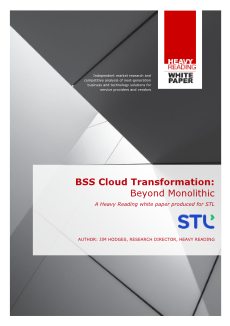INTRODUCTION
As communications service providers (CSPs) continue to embrace cloud services, they must also look inward and assess how this shift will transform their existing operational processes.
A key component of this assessment process is documenting the operational and design impact on business support systems (BSS) and their ability to support cloud key performance indicators (KPIs) and open application programming interfaces (APIs) in an Open Digital Architecture (ODA) environment.
This white paper documents the requirements for BSS in the cloud transformation process, with a focus on the technical requirements of cloud-enabled BSS and the best practices for implementing them.
CLOUD BSS DESIGN REQUIREMENTS
While CSPs’ transformation to the cloud has already commenced, it will be gradual; there are too many embedded service and provisioning capabilities that are critical to service enablement to support a flash cut. This is advantageous in several respects, including providing much needed time for CSPs to rearchitect their cloud-based BSSs
The first step in this process is evaluating how legacy BSS differ from cloud BSS. At a high level, the differences are shaped by several factors: universal service delivery, location transparency, and open KPIs
Universal service delivery and location transparency
Without question, the cloud will foster a universal service delivery model. In today’s monolithic world, CSPs are often not able to deliver a full suite of legacy services because the cost of deploying hardware and software in remote regions with only a small customer segment to upsell is prohibitive. This is due in large part to the complex nature of how these legacy monolithic services are architected and provisioned.



